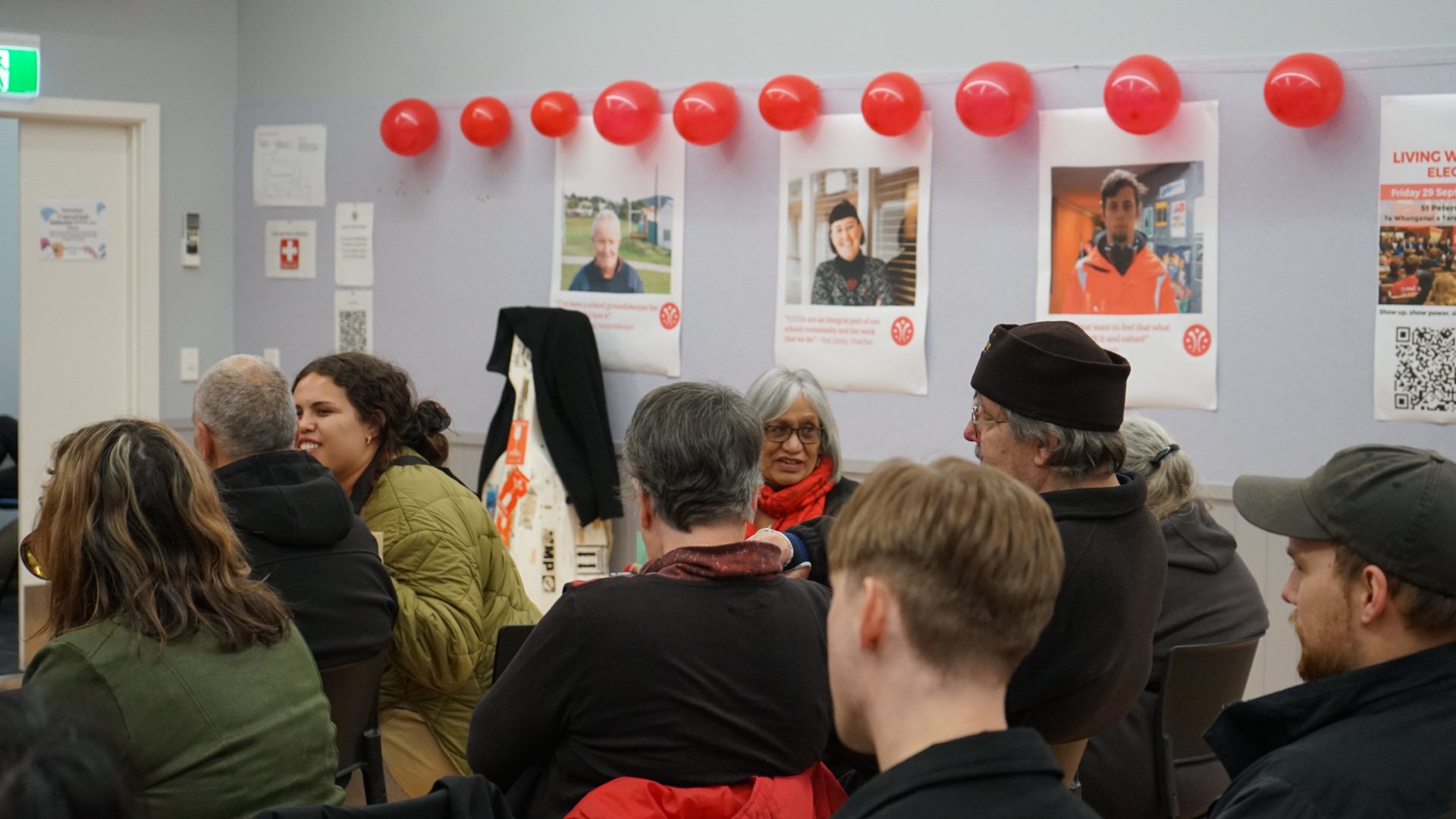
About the Campaign
The Living Wage Schools Campaign aims to ensure that all kura/school cleaners, caretakers, canteen staff, and groundskeepers (CCCGS) are paid a living wage ($27.80 an hour from September 2024). This will enable 1000s of directly employed and contracted CCCGs to achieve parity with other kaimahi in the core public service and public hospitals where the living wage has become the baseline.
CCCGs are essential to the functioning of the over 2500 schools in Aotearoa, which teach over 800,000 students. These kaimahi facilitate healthy and safe learning experiences for our children. Many school CCCGs are employed by private contractors on the statutory minimum wage (currently $22.70 an hour) or very close to it. Therefore, they aren’t paid enough to cover their basic necessities, and live with dignity. Many CCCGs often work at the kura their children attend, meaning low wages have a direct impact on their families and ultimately on the education of their children.
We aim to unite parents, teachers, workers, students, community and faith groups to ensure that those who perform essential work are valued. This will operate to foster a stronger community connection to these kaimahi and promote the belief that nobody should be left behind in this cost-of-living crisis.
Canteen staff supply the nation’s children with the nutrition they need to tackle a day of learning. Food and nutrition are a key component of a child’s development and their ability to succeed.
Cleaners arrive after all students and teachers have finished for the day. They remove dirt, grime, and rubbish, transforming classrooms and school spaces back into sleek and functional learning environments.
Caretakers are jacks of all trades. They undertake an extensive array of tasks to keep school facilities safe and secure, benefiting not only students but also teachers and parents.
Groundskeepers ensure that school sports and activities are able to take place, bringing joy not only to the students but also to the community at large, who gather on weekends to watch their kids participate.
How Do Schools Employ CCCGs?
Schools can employ CCCGs either directly or by contracting out these services. The funding for employing these kaimahi is delivered through the school's operation grant, which is determined by taking into account the number of students at the kura and a collection of other factors. Directly employed staff are required to be paid the rates stipulated in the “School Caretakers, Cleaners, and Canteen Staff Collective Agreement.” In order to limit the financial burden on schools they are provided with a top up that ensures schools can sustain the rates
In addition, kura have the option to contract out these services. Many contract out their CCCG services as they do not have the resources or ability to employ kaimahi directly. Schools often utilise competitive tendering to drive down the costs of their contacts, to free up funds in the operations grant to devote to the general management of their school. As a result, the schools’ tendering process for services operates like any other business - driven by the price and reliability of services. We seek to change this reality by inserting principles of social procurement into school decision-making around the purchasing of services and labour.
Funding Mechanism
We envisage that the funding of the initial increase to bring the wage rates up to the Living Wage would be done by a tagged allocation in the school operations grant, and that allocation to be topped up by any increases that occur in the national collective agreement for the same group of workers who are directly-employed (NZ School Caretakers, Cleaners and Canteen Workers Collective Agreement). An approach replicating the Ministry of Educations 2019 policy that delivered the then living wage to directly employed non-teaching staff.
We also envisage that the Government will issue procurement standards for schools, which will require all tenderers for cleaning, caretaking, canteen staff, and groundskeepers to pay their kaimahi the living wage. This policy would be bolstered by additional operational funding provided by central government to ensure that schools do not bear the financial burden of tendering on the basis of the living wage.
These two approaches ensure that kura are not forced to deplete their already under-resourced operations grant to fund the living wage. Instead, we are encouraging the MOE to take responsibility and support these kaimahi, by providing schools with specific operational funding so they can pay a living wage. It also ensures that we do not impose a “one-size-fits-all” approach on schools by mandating direct staffing, which could hinder the widespread adoption of the living wage in schools.
